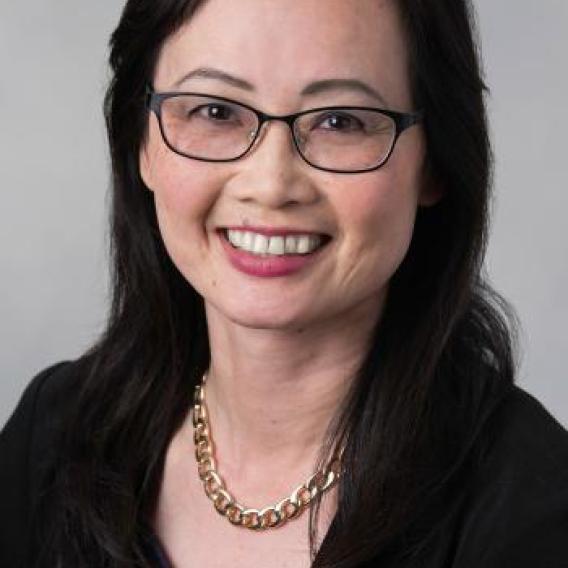Image

Yaping J Liao
Professor - University Medical Line, Ophthalmology
Professor - University Medical Line, Neurology
Member, Bio-X
Member, SPARK at Stanford
Member, Wu Tsai Human Performance Alliance
Member, Maternal & Child Health Research Institute (MCHRI)
Member, Wu Tsai Neurosciences Institute
Fellowship: UCSF Ophthalmology Fellowships (2006) CA
Residency: Stanford University Neurology Residency (2002) CA
Internship: Stanford University Internal Medicine Residency (1999) CA
Medical Education: University of California at San Francisco School of Medicine (1998) CA
A.B., Harvard, Biochemical Sciences (1991)
Ph.D., UCSF, Neuroscience (1996)
Board Certification: American Board of Psychiatry and Neurology, Neurology (2005)
Affiliation:
Dr. Liao is a clinician-scientist who is dedicated to making basic discoveries and improving clinical care and treatment of patients with eye-brain diseases. Dr. Liao received her undergraduate degree with high honors from Harvard University in Biochemical Sciences and her M.D., Ph.D. in Neuroscience (Medical Scientist Training Program) and Fellowship in Neuro-Ophthalmology from University of California San Francisco. She has served as Director of the Neuro-Ophthalmology since 2008 and Founding Director of the Stanford Center for Optic Disc Drusen since 2019. She also serves as Co-Director of the T32-funded Stanford Postdoctoral Vision Training Program since 2009.
Dr. Liao’s research is focused on the pathogenesis and novel treatment of optic neuropathies, which are diseases affecting the 1.2 million axons connecting the eye (captures visual information) and the brain (interprets visual information). Disruption of this important information highway leads to visual dysfunction despite good function in the retina and the brain. In particular, Dr. Liao is studying OPTIC NERVE STROKE (also called anterior ischemic optic neuropathy), which is the most common acute optic neuropathy in those older than 50 years of age, and OPTIC DISC DRUSEN, which is associated with deposition of calcified deposits in the optic nerve and the most common cause of young-onset optic nerve stroke. Her research lab aims to identify the first genes for autosomal dominant optic disc drusen. Dr. Liao’s research areas also include: (1) development of state-of-the-art in vivo imaging techniques in the eye as novel biomarkers of disease; (2) investigations of the key cellular and molecular changes in optic neuropathies leading to vision loss, including the use of patient specimen and stem cell research; and (3) testing of novel treatment for optic neuropathies, including neuroprotection and regenerative therapy.
Dr. Liao is also an expert on diseases causing eye movement abnormality and double vision. The eyes move to allow us to see, and we move our eyes about 3 times per second. Because eye movement is very precisely controlled and intergrated with visual processing, vision loss or eye movement abnormality both lead to impairment of visuo-motor behavior, leading to debilitating symptoms such as eye strain, dizziness ,and headache during activities of daily living. Dr. Liao uses noninvasive infrared eye trackers (sampling up to 1000 times per second) to perform recordings of visuo-motor behavior in the Stanford Eye Clinic. By recording and studying eye behavior, Dr. Liao's team can decipher the most important contributors to visual disability, which will her her design the most appropriate treatment and visual rehabilitation for each patient.
Dr. Liao’s research is focused on the pathogenesis and novel treatment of optic neuropathies, which are diseases affecting the 1.2 million axons connecting the eye (captures visual information) and the brain (interprets visual information). Disruption of this important information highway leads to visual dysfunction despite good function in the retina and the brain. In particular, Dr. Liao is studying OPTIC NERVE STROKE (also called anterior ischemic optic neuropathy), which is the most common acute optic neuropathy in those older than 50 years of age, and OPTIC DISC DRUSEN, which is associated with deposition of calcified deposits in the optic nerve and the most common cause of young-onset optic nerve stroke. Her research lab aims to identify the first genes for autosomal dominant optic disc drusen. Dr. Liao’s research areas also include: (1) development of state-of-the-art in vivo imaging techniques in the eye as novel biomarkers of disease; (2) investigations of the key cellular and molecular changes in optic neuropathies leading to vision loss, including the use of patient specimen and stem cell research; and (3) testing of novel treatment for optic neuropathies, including neuroprotection and regenerative therapy.
Dr. Liao is also an expert on diseases causing eye movement abnormality and double vision. The eyes move to allow us to see, and we move our eyes about 3 times per second. Because eye movement is very precisely controlled and intergrated with visual processing, vision loss or eye movement abnormality both lead to impairment of visuo-motor behavior, leading to debilitating symptoms such as eye strain, dizziness ,and headache during activities of daily living. Dr. Liao uses noninvasive infrared eye trackers (sampling up to 1000 times per second) to perform recordings of visuo-motor behavior in the Stanford Eye Clinic. By recording and studying eye behavior, Dr. Liao's team can decipher the most important contributors to visual disability, which will her her design the most appropriate treatment and visual rehabilitation for each patient.